Abstract
A review of results published in English or French between 1980 and 1990 was carried out to determine the levels of indigenous human enteric viruses in untreated surface and subsurface freshwaters, as well as in drinking water that had undergone the complete conventional treatment process. For this purpose, the conventional treatment process was defined as an operation that included coagulation followed by sedimentation, filtration, and disinfection. Also assessed was the stepwise efficiency of the conventional treatment process, as practised at full-scale facilities, for removing indigenous viruses from naturally occurring freshwaters. A list was compiled of statistical correlations relating to the occurrence of indigenous viruses in water.
Full text
PDF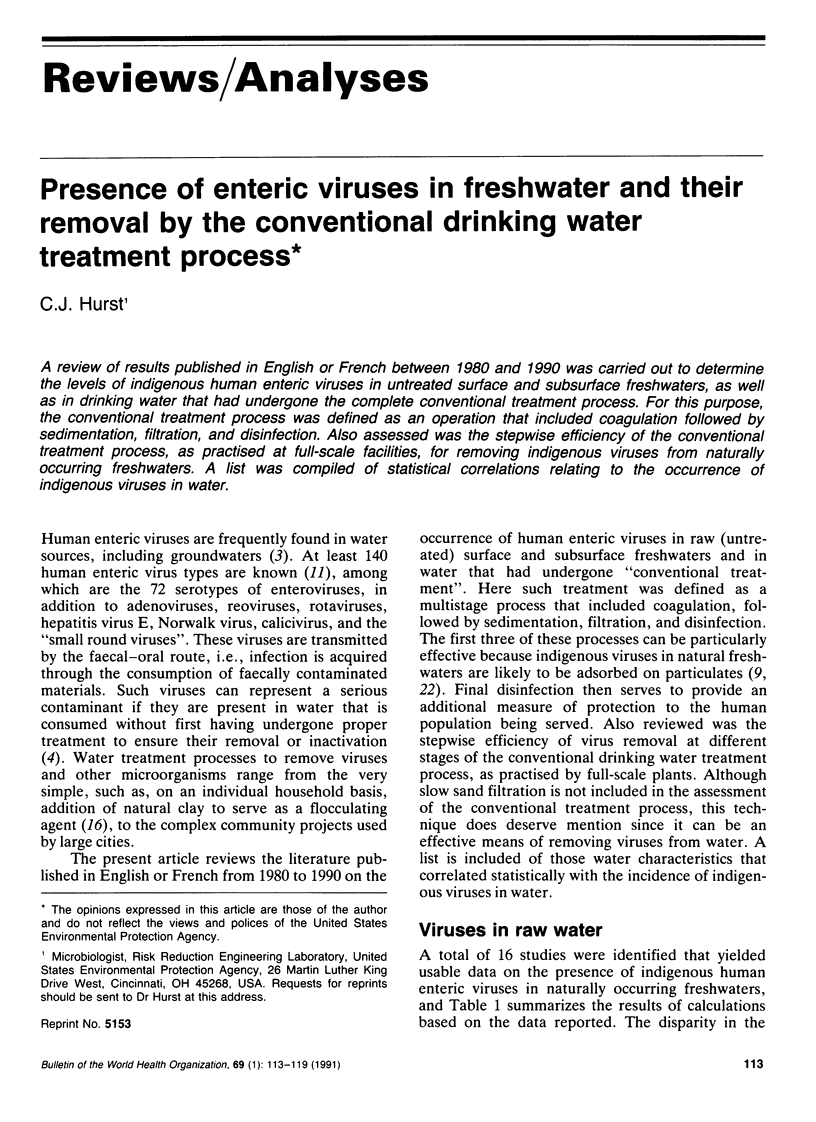
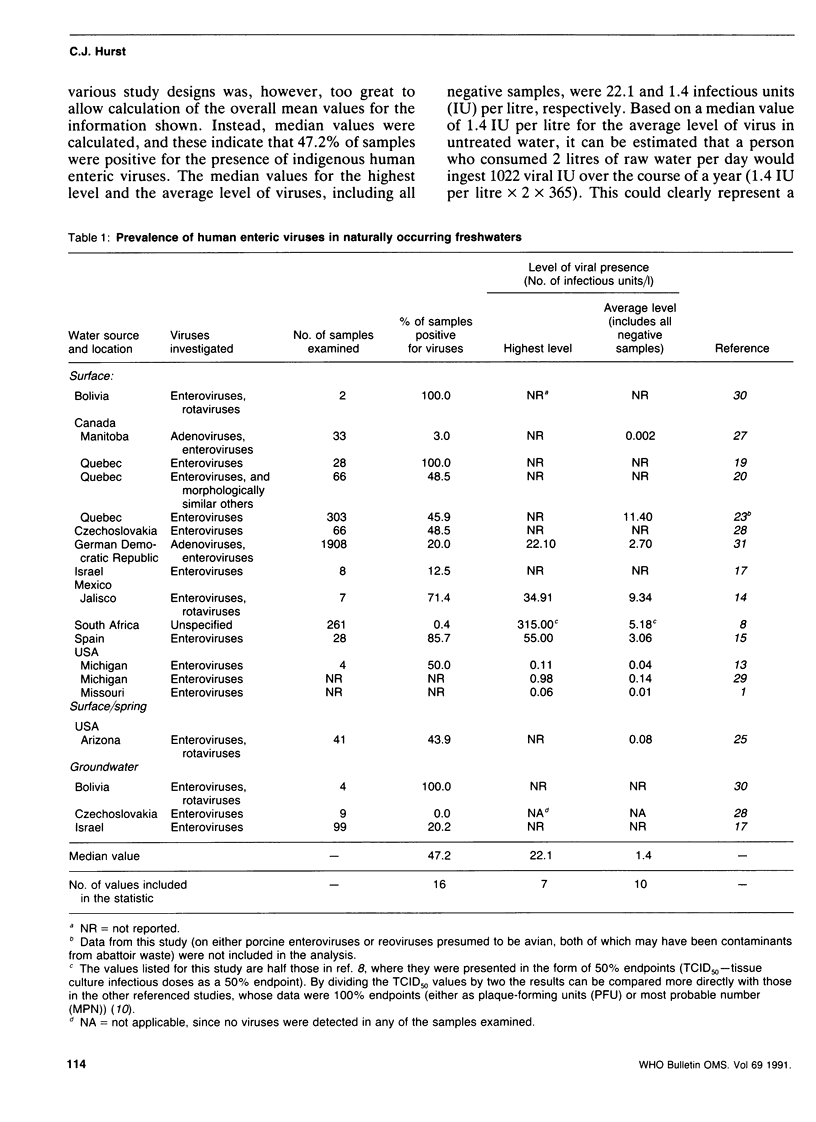
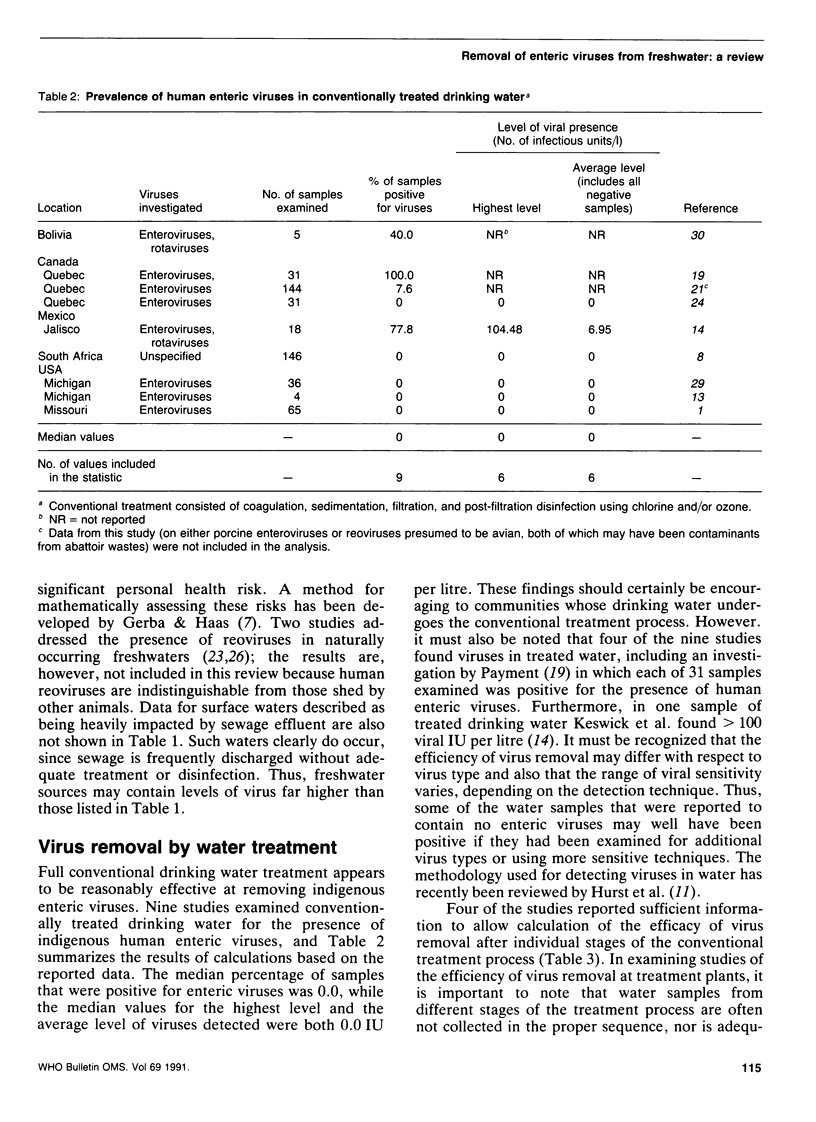
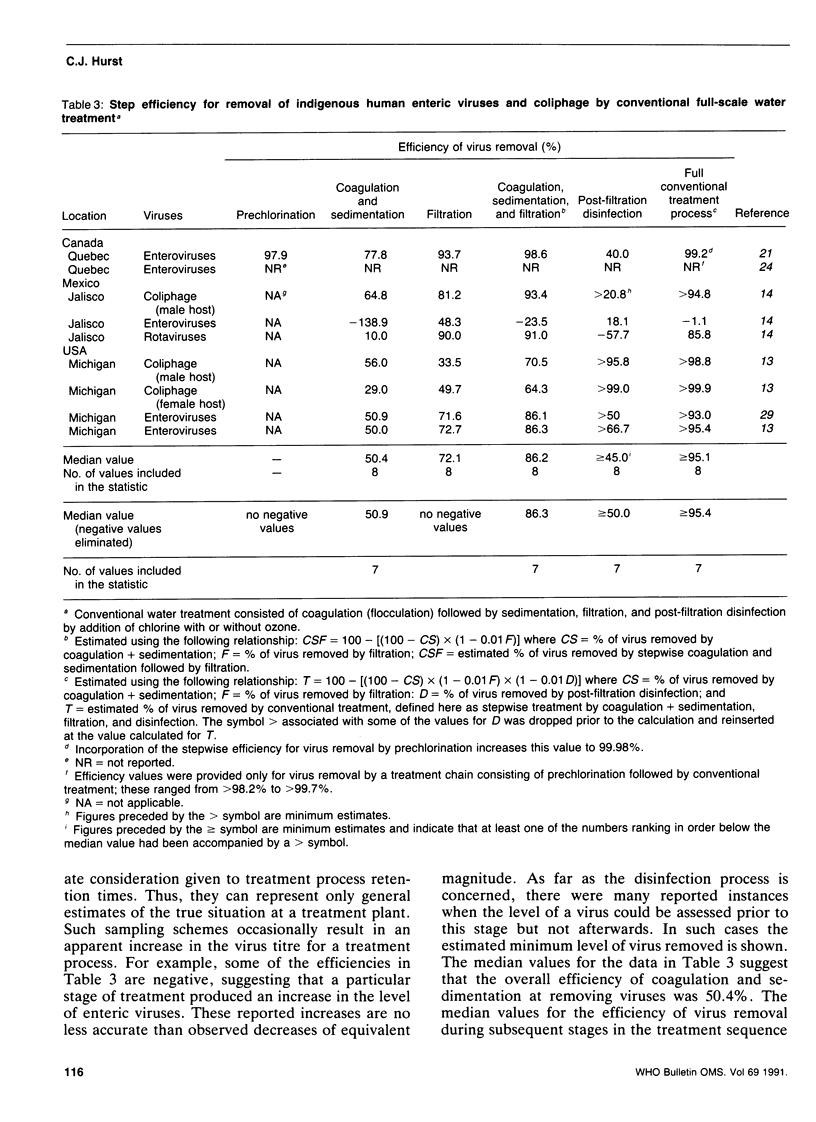
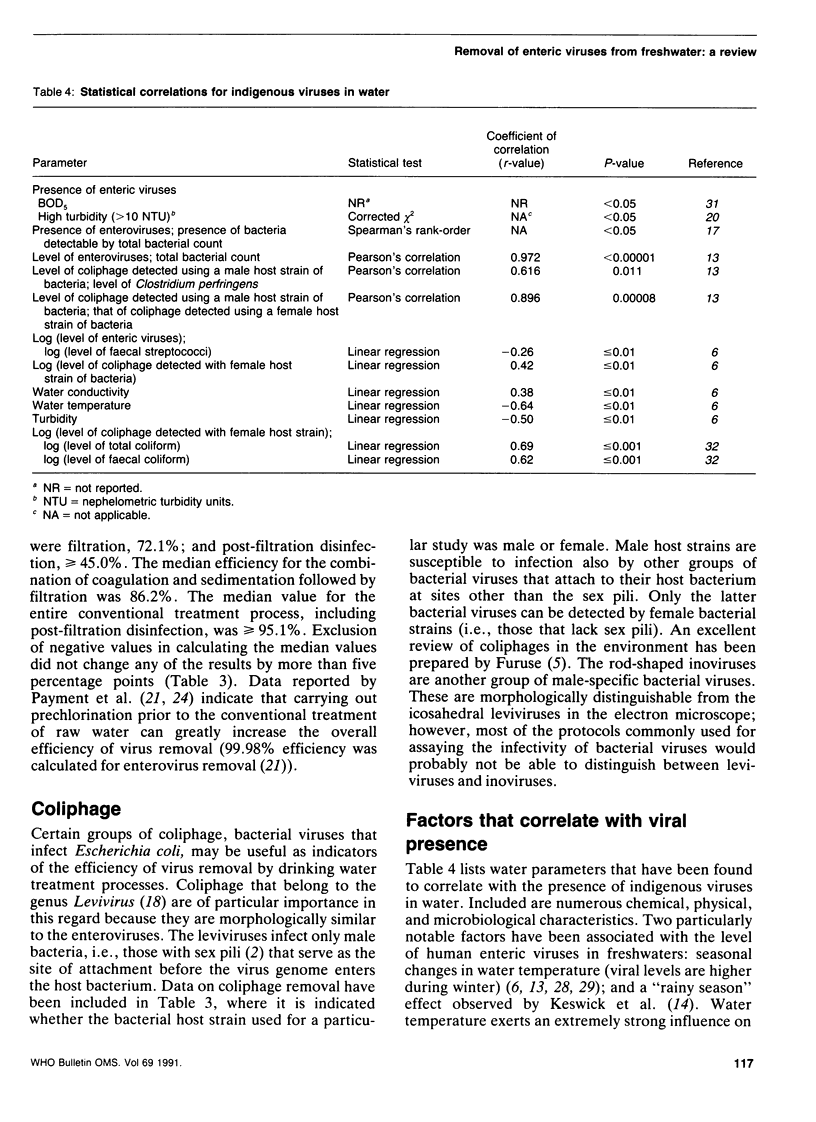
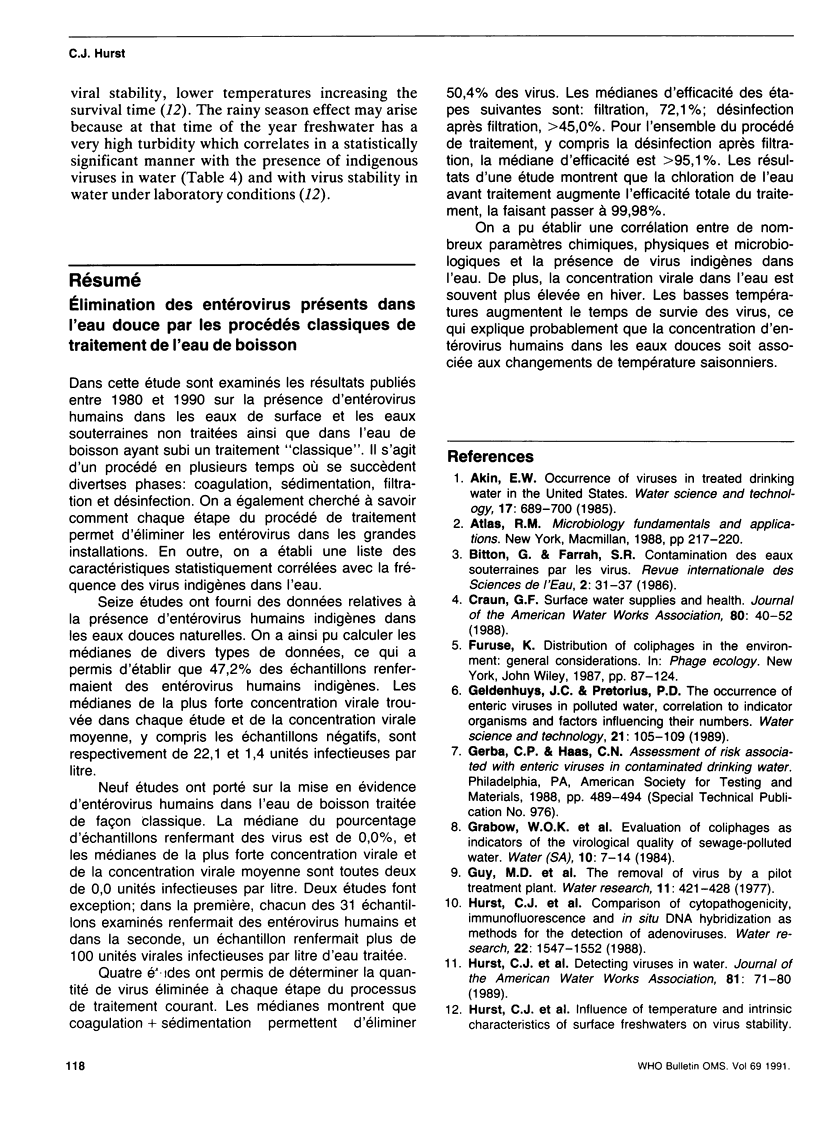
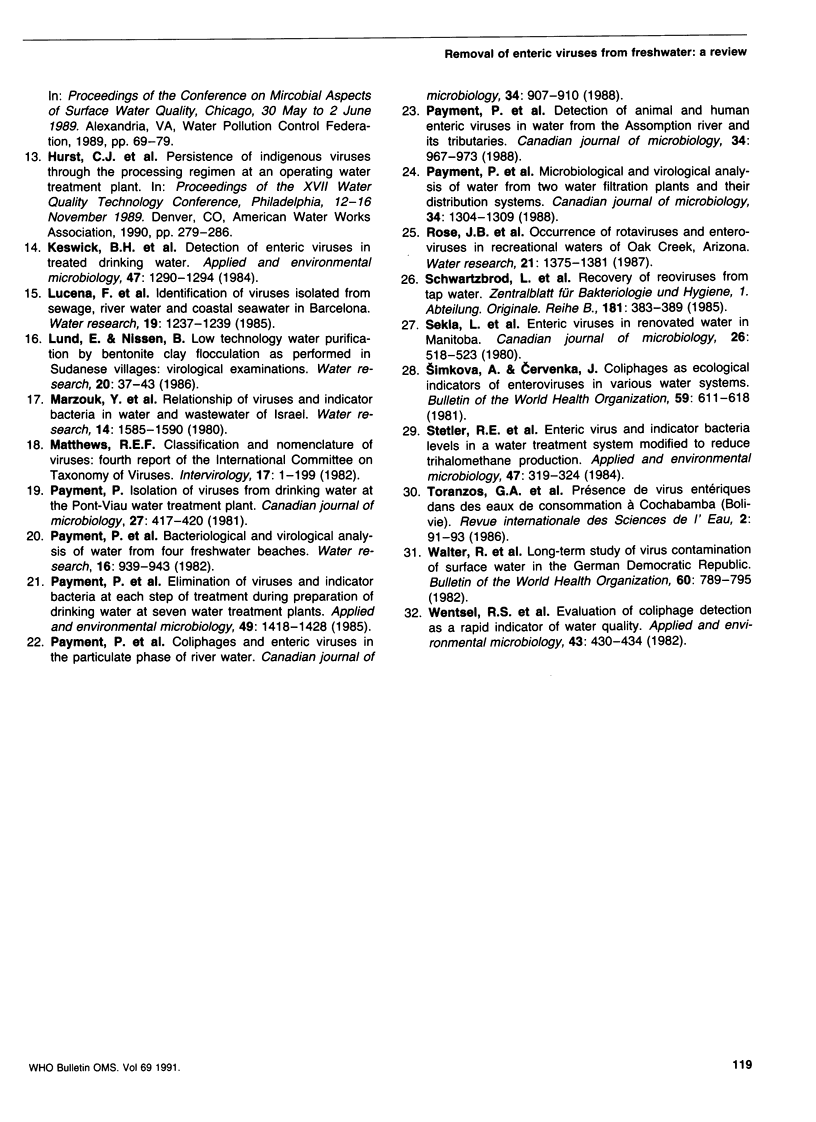
Selected References
These references are in PubMed. This may not be the complete list of references from this article.
- Keswick B. H., Gerba C. P., DuPont H. L., Rose J. B. Detection of enteric viruses in treated drinking water. Appl Environ Microbiol. 1984 Jun;47(6):1290–1294. doi: 10.1128/aem.47.6.1290-1294.1984. [DOI] [PMC free article] [PubMed] [Google Scholar]
- Payment P., Affoyon F., Trudel M. Detection of animal and human enteric viruses in water from the Assomption River and its tributaries. Can J Microbiol. 1988 Aug;34(8):967–973. doi: 10.1139/m88-170. [DOI] [PubMed] [Google Scholar]
- Payment P., Gamache F., Paquette G. Microbiological and virological analysis of water from two water filtration plants and their distribution systems. Can J Microbiol. 1988 Dec;34(12):1304–1309. doi: 10.1139/m88-228. [DOI] [PubMed] [Google Scholar]
- Payment P. Isolation of viruses from drinking water at the Point-Viau water treatment plant. Can J Microbiol. 1981 Apr;27(4):417–420. doi: 10.1139/m81-063. [DOI] [PubMed] [Google Scholar]
- Payment P., Morin E., Trudel M. Coliphages and enteric viruses in the particulate phase of river water. Can J Microbiol. 1988 Jul;34(7):907–910. doi: 10.1139/m88-158. [DOI] [PubMed] [Google Scholar]
- Payment P., Trudel M., Plante R. Elimination of viruses and indicator bacteria at each step of treatment during preparation of drinking water at seven water treatment plants. Appl Environ Microbiol. 1985 Jun;49(6):1418–1428. doi: 10.1128/aem.49.6.1418-1428.1985. [DOI] [PMC free article] [PubMed] [Google Scholar]
- Schwartzbrod L., Finance C., Aymard M., Brigaud M., Lucena F. Recovery of reoviruses from tap water. Zentralbl Bakteriol Mikrobiol Hyg B. 1985 Dec;181(3-5):383–389. [PubMed] [Google Scholar]
- Sekla L., Stackiw W., Kay C., VanBuckenhout L. Enteric viruses in renovated water in Manitoba. Can J Microbiol. 1980 Apr;26(4):518–523. doi: 10.1139/m80-087. [DOI] [PubMed] [Google Scholar]
- Simková A., Cervenka J. Coliphages as ecological indicators of enteroviruses in various water systems. Bull World Health Organ. 1981;59(4):611–618. [PMC free article] [PubMed] [Google Scholar]
- Stetler R. E., Ward R. L., Waltrip S. C. Enteric virus and indicator bacteria levels in a water treatment system modified to reduce trihalomethane production. Appl Environ Microbiol. 1984 Feb;47(2):319–324. doi: 10.1128/aem.47.2.319-324.1984. [DOI] [PMC free article] [PubMed] [Google Scholar]
- Walter R., Dobberkau H. J., Bartelt W., Diener W., Härtel I., Heinrich U., Müller U., Rüdiger S., Stettnisch B. Long-term study of virus contamination of surface water in the German Democratic Republic. Bull World Health Organ. 1982;60(5):789–795. [PMC free article] [PubMed] [Google Scholar]
- Wentsel R. S., O'Neill P. E., Kitchens J. F. Evaluation of coliphage detection as a rapid indicator of water quality. Appl Environ Microbiol. 1982 Feb;43(2):430–434. doi: 10.1128/aem.43.2.430-434.1982. [DOI] [PMC free article] [PubMed] [Google Scholar]


